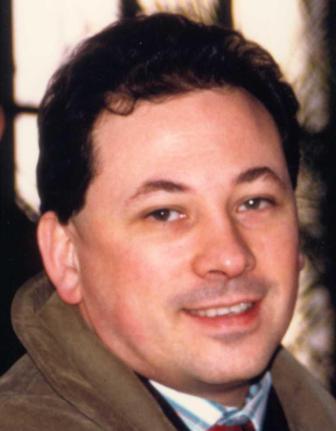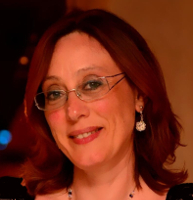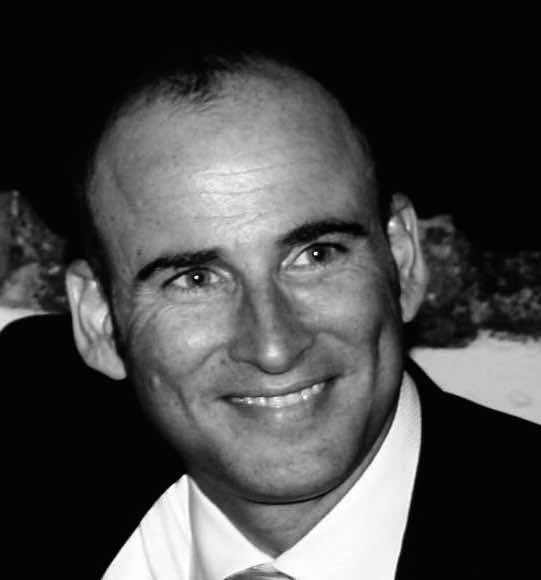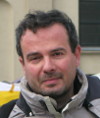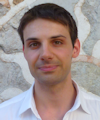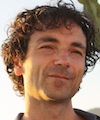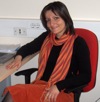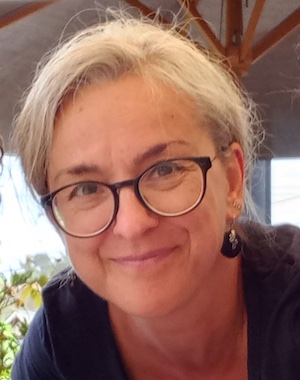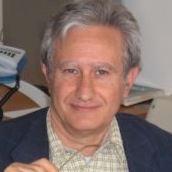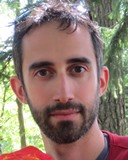Studying at the University of Verona
Here you can find information on the organisational aspects of the Programme, lecture timetables, learning activities and useful contact details for your time at the University, from enrolment to graduation.
Academic calendar
The academic calendar shows the deadlines and scheduled events that are relevant to students, teaching and technical-administrative staff of the University. Public holidays and University closures are also indicated. The academic year normally begins on 1 October each year and ends on 30 September of the following year.
Course calendar
The Academic Calendar sets out the degree programme lecture and exam timetables, as well as the relevant university closure dates..
| Period | From | To |
|---|---|---|
| I sem. | Oct 3, 2016 | Jan 31, 2017 |
| II sem. | Mar 1, 2017 | Jun 9, 2017 |
| Session | From | To |
|---|---|---|
| Sessione invernale Appelli d'esame | Feb 1, 2017 | Feb 28, 2017 |
| Sessione estiva Appelli d'esame | Jun 12, 2017 | Jul 31, 2017 |
| Sessione autunnale Appelli d'esame | Sep 1, 2017 | Sep 29, 2017 |
| Session | From | To |
|---|---|---|
| Sessione estiva Appelli di Laurea | Jul 19, 2017 | Jul 19, 2017 |
| Sessione autunnale Appelli di laurea | Oct 18, 2017 | Oct 18, 2017 |
| Sessione invernale Appelli di laurea | Mar 21, 2018 | Mar 21, 2018 |
| Period | From | To |
|---|---|---|
| Festa di Ognissanti | Nov 1, 2016 | Nov 1, 2016 |
| Festa dell'Immacolata Concezione | Dec 8, 2016 | Dec 8, 2016 |
| Vacanze di Natale | Dec 23, 2016 | Jan 8, 2017 |
| Vacanze di Pasqua | Apr 14, 2017 | Apr 18, 2017 |
| Anniversario della Liberazione | Apr 25, 2017 | Apr 25, 2017 |
| Festa del Lavoro | May 1, 2017 | May 1, 2017 |
| Festa della Repubblica | Jun 2, 2017 | Jun 2, 2017 |
| Vacanze estive | Aug 8, 2017 | Aug 20, 2017 |
Exam calendar
Exam dates and rounds are managed by the relevant Science and Engineering Teaching and Student Services Unit.
To view all the exam sessions available, please use the Exam dashboard on ESSE3.
If you forgot your login details or have problems logging in, please contact the relevant IT HelpDesk, or check the login details recovery web page.
Should you have any doubts or questions, please check the Enrollment FAQs
Academic staff
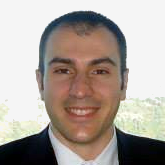
Bloisi Domenico Daniele
 domenico.bloisi@univr.it
domenico.bloisi@univr.it
 maurizio.boscaini@univr.it
maurizio.boscaini@univr.it
 federico.busato@univr.it
federico.busato@univr.it
Study Plan
The Study Plan includes all modules, teaching and learning activities that each student will need to undertake during their time at the University.
Please select your Study Plan based on your enrollment year.
1° Year
| Modules | Credits | TAF | SSD |
|---|
2° Year activated in the A.Y. 2017/2018
| Modules | Credits | TAF | SSD |
|---|
| Modules | Credits | TAF | SSD |
|---|
| Modules | Credits | TAF | SSD |
|---|
Legend | Type of training activity (TTA)
TAF (Type of Educational Activity) All courses and activities are classified into different types of educational activities, indicated by a letter.
Biomedical image processing (2017/2018)
Teaching code
4S004554
Academic staff
Coordinator
Credits
6
Language
English
Scientific Disciplinary Sector (SSD)
INF/01 - INFORMATICS
Period
II sem. dal Mar 1, 2018 al Jun 15, 2018.
Location
VERONA
Learning outcomes
The course deals with the major sources of medical imaging data (X-rays, CT, MRI, PET and US) and provides the students with a flavour of the current methods used to process medical images, enhance their quality and extract useful information from them. A particular focus will be given to diffusion MRI, as it represents a very rich imaging modality that will allow us to investigate several analysis techniques starting from the same data, at increasing levels of complexity.
These concepts are also illustrated in hands-on sessions where these techniques are applied to practical situations and problems that often arise when analyzing real medical images. The laboratory activities will be based on the Python language.
Program
(1) Basic concepts
- Image properties: pixel vs voxel, spatial resolution, orientation, data type etc
- File formats: DICOM, NIFTI, MINC etc
- Signal-to-noise (SNR) vs Contrast-to-noise (CNR) ratio
- Noise, blurring and modality-specific artifacts
- Signal representation: frequency domain, spherical harmonics, sparse bases
(2) Overview of major medical imaging modalities
- Radiography: X-rays projection, fluoroscopy and computed tomography (CT)
- Nuclear medicine: SPECT and PET
- Ultrasound imaging (US)
- Magnetic Resonance Imaging (MRI)
(3) Basic image processing
- Recall of elementary tools: filtering, edge detection and image enhancement
- Registration: features, similarity measures, transformations (linear vs non-linear)
(4) Connectivity analysis with diffusion MRI
- Principles and main applications
- Local reconstruction: DTI, DSI, CSD etc
- Tissue microstructure estimation: axon diameter mapping, AxCaliber, ActiveAx, CHARMED, NODDI etc
- Tractography: local vs global methods, probabilistic, recent advances
(5) Laboratory
- Introduction to Python
- Hands-on activities on the topics covered throughout the course
| Author | Title | Publishing house | Year | ISBN | Notes |
|---|---|---|---|---|---|
| Ravishankar Chityala | Image processing and acquisition using Python (Edizione 1) | Chapman and Hall/CRC | 2014 | 9781466583757 | |
| Andrew Webb | Introduction to biomedical imaging | Wiley-IEEE Press | 2003 | 978-0-471-23766-2 | |
| Jerrold T. Bushberg | The Essential Physics of Medical Imaging (Edizione 3) | Lippincott Williams & Wilkins | 2011 | 0781780578 |
Examination Methods
The grade will be based on a discussion about the final project assigned during the course. The final project is a very important part of the course, as it allows students to synthesize the concepts learned throughout the course, understand the motivation behind each modality, experiment typical problems that arise in daily-life medical images and apply the appropriate techniques to improve image quality and extract useful information.
Type D and Type F activities
Modules not yet included
Career prospects
Module/Programme news
News for students
There you will find information, resources and services useful during your time at the University (Student’s exam record, your study plan on ESSE3, Distance Learning courses, university email account, office forms, administrative procedures, etc.). You can log into MyUnivr with your GIA login details: only in this way will you be able to receive notification of all the notices from your teachers and your secretariat via email and soon also via the Univr app.
Graduation
Deadlines and administrative fulfilments
For deadlines, administrative fulfilments and notices on graduation sessions, please refer to the Graduation Sessions - Science and Engineering service.
Need to activate a thesis internship
For thesis-related internships, it is not always necessary to activate an internship through the Internship Office. For further information, please consult the dedicated document, which can be found in the 'Documents' section of the Internships and work orientation - Science e Engineering service.
Final examination regulations
Upon completion of the Master’s degree dissertation, students are awarded 24 CFU, which equates to no more than 4-5 months of full-time work. The dissertation may be written and presented in English or Italian, also using multimedia tools such as presentations and videos.
Goals
The primary goal of a dissertation is to develop an original study that may include an application project or a theoretical topic related to specific design issues, or a critical review of the most recent developments in a given field of study. During the preparation of the dissertation, under the guidance of the Supervisor and co-supervisors (if any), the student is expected to conduct an in-depth study of the chosen topic, while gaining the ability to summarise and creatively apply the knowledge acquired. The dissertation should focus on topics of bioinformatics and medical informatics, or closely related areas of study. The work shall consist in the written presentation of activities that may be structured as follows:
- design and development of applications or systems;
- critical analysis of contributions from the scientific literature;
- original research contributions.
The dissertation may be written either in English or in Italian, and can be presented either in English or in Italian, also relying on multimedia tools such as presentations and videos. Should the dissertation be written in Italian, the work will need to include an abstract in English.
Assessment methods and examination procedures
The final examination consists in writing a Master’s degree dissertation, which will engage the student in a work of research, formalisation, design or development, thus contributing to complete their technical and scientific training. Each dissertation can be either internal or external, depending on whether it is carried out at the University of Verona or in collaboration with another institution. For each dissertation a Supervisor, one or more co-supervisors (optional) and an Examiner will be appointed. The Examiner is appointed by the Computer Science Teaching Committee at least 20 days before the presentation of the dissertation, once the student's eligibility to take the Master's degree examination has been verified. With regard to the legal aspects related to the dissertation and its scientific outcomes (e.g. intellectual property of research outcomes), please refer to the relevant legislation and the University Regulations.
Evaluation of the dissertation
The Supervisor, the co-supervisor/s (if any) and the Examiner will evaluate the dissertation based on the following criteria:
- level of in-depth analysis carried out, in relation to the most recent developments in the areas related to information technology, with a focus on medical and biological applications;
- scientific and/or technological outcomes of the dissertation;
- student’s critical thinking;
- student’s experimental and/or formal development;
- student’s ability to carry out independent work (this point will not be assessed by the Examiner);
- value of the methodologies used;
- accuracy in planning and writing the dissertation.
Graduation mark
The graduation mark (based on a 110-point scale) is a whole value between 66/110 and 110/110 and is calculated by adding together the following elements (then rounding the result to the nearest whole number, e.g. 93.50 => 94; 86.49 => 86):
- 1) the average of the marks gained in the modules, weighted according to CFU, converted to a 110-point scale;
- 2) evaluation of the dissertation and the oral presentation during the final examination, based on the following methods:
- a) each of the points 1-7 listed above will be assigned a coefficient between 0 and 1 (fractional coefficient with one decimal place);
- b) the quality of the presentation will be assessed by awarding a coefficient between 0 and 1 (fractional coefficient with one decimal place);
- c) the sum of the points resulting from (a) and (b).
The Graduation Committee may award one extra point in the following cases: cum laude honours obtained in the exams taken during the degree programme; participation in internships officially recognised by the Computer Science Teaching Committee; taking extra modules; and the achievement of the degree in a time that is shorter than the normal duration of the degree programme. If the final score is 110/110, the Graduation Committee may award cum laude honours by unanimous decision.
External dissertations
An external dissertation is a work carried out in collaboration with an institution/body other than the University of Verona. In this case, the topic of the dissertation must be agreed in advance with a Supervisor from the University of Verona. In addition, the student must indicate at least one co- supervisor belonging to the external institution/body, who will support the student during the work on the dissertation. The Supervisor and the co- supervisors must be indicated in the online graduation application. The insurance aspects relating to the student's stay at the external institution are regulated by the regulations in force at the University of Verona. If the dissertation involves a period of training at the external institution/body, then it is necessary that the University of Verona enters into a specific agreement with such institution/body. The scientific outcomes of the dissertation will be available to all parties involved. In particular, the contents and results of the dissertation are to be considered public. For all matters not strictly scientific (e.g. agreements, insurance) the resolution of the Academic Senate of 12 January 1999 shall be taken as a reference.
Supervisor, co-supervisors, examiners
The dissertation presentation is introduced by the Supervisor. Professors belonging to the Master’s degree programme in Medical Bioinformatics, the Department of Computer Science, and any associated departments may be appointed as Supervisors, as well as any lecturers from the University of Verona whose area of interest is included in the Scientific-disciplinary Sectors (SSD) ING/INF/05 and INF/01. In addition to those who have the above requirements to be appointed as Supervisor, the following individuals may be appointed as co-supervisors: researchers working in external research institutes, research grant holders, post-doctoral fellowship holders, PhD students, technical staff of the Department, external experts appointed by an Italian University, corporate officers who have a remarkable experience in the field relevant to the topic of the dissertation. Examiners may be appointed among professors of the University of Verona, working in the Scientific- disciplinary Sectors (SSD) included in the educational offer of the Master’s degree programme in Medical Bioinformatics, and experts in the specific field of the dissertation topic.
Procedures and deadlines
The student who is about to complete their studies must identify a dissertation topic, proposed or approved by a Supervisor or co-supervisor/s (if any). When the work is nearing completion, the student must submit to the Teaching and Student Services Unit the graduation application, which must contain the title of the dissertation (even provisional), the name of the Supervisor, co-supervisor/s (only for external dissertations) and Examiner. Subsequently, on dates established by the Teaching and Student Services Unit, and in any case no later than 20 days before the graduation, the student must submit the graduation application form with the final title of the dissertation, which must be signed by the Supervisor. These documents must be delivered in accordance with the terms established by the Teaching and Student Services Unit.
The student will need to:
- i) upload a copy of their dissertation on ESSE3;
- ii) send a copy of their dissertation in PDF format to their Examiner.
In order to be admitted to the final examination, the student must have acquired the CFU in the SSD (Scientific-Disciplinary Sectors) set out in the Master’s degree regulations and teaching plan, and be up to date with the payment of their tuition fees. The Teaching and Student Services Unit of the Master's degree programme will invite all the Supervisors and co-supervisors involved, providing them with information about the date and time of the final examination.
Graduation Committee
The Graduation Committee shall include five members, of which at least four are professors in the Master's degree programme in Medical Bioinformatics. Based on the number of graduates, the Computer Science Teaching Committee will identify the most appropriate organisational methods for administering the examination, and it shall make available the calendar of tests at least one week before the examination itself. The procedures and deadlines for the submission of the graduation application are established by the Computer Science Teaching Committee and by the relevant offices.
Attendance
As stated in the Teaching Regulations for the A.Y. 2022/2023, attendance at the course of study is not mandatory.

 +39 045 8027657
+39 045 8027657
